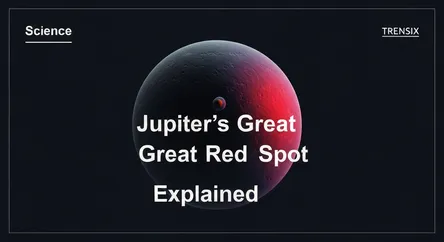Science
Jupiter's Great Red Spot Explained

Discover Jupiter's Great Red Spot, a colossal storm larger than Earth that has been raging for centuries. Learn why this giant anticyclone is shrinking.
What is it?
The Great Red Spot is a persistent high-pressure region in Jupiter's southern hemisphere, producing a massive anticyclonic storm. It is the largest storm in our Solar System, with a diameter so vast that it could engulf the entire Earth. Its iconic reddish hue, the exact cause of which is still debated by scientists, makes it one of the most recognizable features of the gas giant. Winds at its periphery can reach speeds of over 400 kilometers per hour. Observations of the storm date back centuries, highlighting its incredible longevity compared to storms on Earth.
Why is it trending?
The Great Red Spot is a hot topic because recent observations from the Hubble Space Telescope and NASA's Juno spacecraft have confirmed that the storm is shrinking. For over a century, astronomers have tracked its gradual contraction, and modern data provides unprecedented detail on this change. Scientists are actively studying why it's shrinking and changing shape, which fuels new research into the atmospheric dynamics of gas giants. Its mysterious color source and enduring nature continue to make it a prime subject for astronomical study.
How does it affect people?
While the Great Red Spot has no direct impact on daily life on Earth, its study is crucial for planetary science and meteorology. It serves as a natural laboratory for understanding complex weather systems and fluid dynamics on a massive scale, providing insights that are impossible to replicate in labs. This knowledge helps us model and understand our own planet's weather patterns, like hurricanes and cyclones, more effectively. Furthermore, understanding the forces that drive Jupiter's atmosphere helps scientists learn more about planetary formation and the conditions on exoplanets far beyond our solar system.